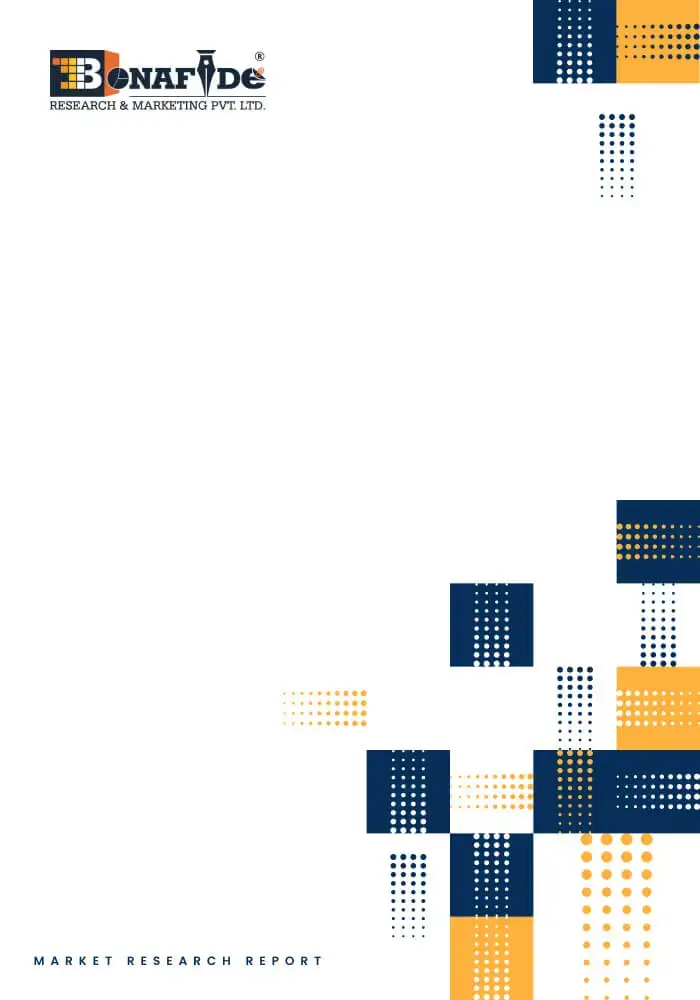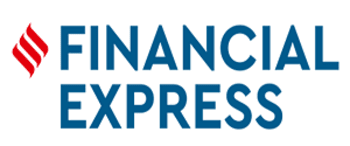"Japan is known for its rich history of precision engineering and technological innovation, and the bearing market there occupies a sizeable portion of the country's industrial landscape. Japan has become a market leader in the bearing sector, with a solid manufacturing base and a reputation for producing high-quality bearings that adhere to exacting reliability and performance requirements. Japan's excellence-focused culture, painstaking attention to detail, and steadfast dedication to producing top-notch goods are to be blamed for the market's popularity. Japanese bearing producers are renowned for their cutting-edge production methods, innovative research and development, and unrelenting pursuit of technological advances. The Japanese bearing industry is an exceptional example of how cultural values, modern trends, and an unrelenting quest for innovation can coexist. Japan's well-known reputation for precision engineering is reflected in the country's manufacturers, who demonstrate a deeply ingrained culture of craftsmanship and attention to detail. Notable market trends include the rising need for highly-performing bearings for cutting-edge applications like robotics and medical equipment, as well as miniaturised bearings for small electronic devices. With an emphasis on creating cutting-edge bearing technologies like ceramic and hybrid bearings that offer increased durability, decreased friction, and higher energy efficiency, Japan is a global leader in innovation. According to the report title, ""Japan Bearing Market Overview, 2027,"" published by Bonafide research, the market is projected to grow rapidly over the forecast period, driven by the demand for mounted bearings. By the end of the forecast period 2027, the ball bearing segment is expected to account for nearly half of the market. The industry additionally promotes a culture of continual development, utilising lean manufacturing concepts and quality management systems to guarantee the highest levels of product dependability and client delight. Innovation is cultivated by collaboration between business, academia, and research organisations, which results in improvements in production procedures, lubricating methods, and materials. Japan's market for bearings is fueled by a dedication to excellence, positioning it as a leader in the field and assuring its sustained expansion and capacity to fulfil the changing needs of various sectors. To maintain quality, standardisation, and industry conformity, the bearing equipment market in Japan relies on a number of recognised groups and certifications. The JBIA works with manufacturers to advance industry interests and exchanges information. JBIA collaborates with regulatory organisations and governmental entities to create and implement industry standards and regulations. JQA certifies quality management systems to guarantee compliance with widely accepted standards like ISO 9001. JIS is a significant resource for bearing producers, outlining the technical specifications, dimensions, and performance standards needed to guarantee product uniformity and interoperability.
What's Inside a Bonafide Research`s industry report?
Asia-Pacific dominates the market and is the largest and fastest-growing market in the animal growth promoters industry globally
Download SampleJIS standards compliance is highly regarded as a proof of the dedication of Japanese producers to producing high-quality goods. The active participation of these authorised groups and certifications enhances the reliability and trustworthiness of the Japanese market for bearing equipment. This is due to increased air passenger and air cargo use. The threats and geopolitical situations demand more aerial defence aircraft. Unmounted bearings have a major market share as they are traditional bearings that were introduced first in the market space. OEM bearing demands are high as they require bearings in different forms to manufacture and assemble the equipment or products, such as automobiles or appliances that they make. Aftermarkets generally cater to replacing and maintaining the original equipment, appliances, or other machinery and have less market share. Stainless steel bearings are in demand over the coming years as they can withstand high heat. Mounted bearings are expected to drive future market demand with wide scale application. Increased efficiency and long life of bearings that demand less maintenance are the other factors that created more demand for bearings. However, competitive products in the market may act as a market restraint. There would be more demand for specialised bearings to optimise the costs of machines and increased adoption of sensor-based bearing units coupled with the Internet of Things are expected to be growth opportunities for bearings. Railways and agriculture are projected to utilise more bearings in the forecast period as this industry focuses on reducing costs and enhancing the lifetime of rails and machines. Railway gearboxes use bearings to lessen shocks caused due to friction between motors and wheels running on tracks. The advancements in technology have reduced the maintenance costs for railways and strengthened cage strength. The innovations in agriculture IoT have led to increased utilisation and monitoring of equipment and machineries that further accelerate market demand for bearings in the country. Agriculture equipment like horizontal and vertical conveyors, worm conveyors, auxiliary transmissions, ploughs, and harvesters have boosted demand for mounted bearings in recent years. Chrome steel is the most widely used material to make bearings as it is both cost-effective and durable. Bearings can also be made from other materials like stainless steel, carbon steel, brass, plastics, ceramics, and other types. Stainless steel bearings are used in corrosive atmospheres as they are resistant and hard but not suitable for salt water and other chemicals. Ceramics are used for extreme temperatures, while plastic bearings are used where less load and speed is required. The supply and demand chain for bearings was highly disturbed amid the pandemic. Trade restrictions led to shortages of parts and raw materials from the Asia Pacific region. This resulted in delayed production orders and a reduced workforce, which halted OEM production lines. The automotive sector was highly affected, but the demand for electric vehicles increased amid the pandemic, which created new demands for bearings, which supported the market growth. After the pandemic, the technological advancements in the bearing market are expected to significantly drive demand. The high import duties levied and scarce raw materials have led to a rise in the cost of bearings. Considered in this report • Geography: Japan • Historic year: 2016 • Base year: 2021 • Estimated year: 2022 • Forecast year: 2027 Aspects covered in this report • Japan Bearing market with its value and forecast along with its segments • Various drivers and challenges • On-going trends and developments • Top profiled companies • Strategic recommendation By product type in the report: • Ball Bearing • Roller Bearing • Plain Bearing • Others (Magnetic Bearing, Fluid Bearing, Disc Harrow Bearing, etc.)
By application type in the report: • Automotive • Industrial • Aerospace • Others (Railway, Agriculture, etc.) By installation type in the report: • Unmounted Bearing • Mounted Bearing By distribution channel in the report: • Original equipment manufacturers (OEMs) • Aftermarket
By material type in the report: • Metal • Stainless Steel • Chrome Steel • Carbon Steel • Brass • Others (Plastic, Ceramic, etc.) The approach of the report: This report consists of a combined approach of primary as well as secondary research. Initially, secondary research was used to get an understanding of the market and listing out the companies that are present in the market. The secondary research consists of third party sources such as press releases, annual report of companies, analyzing the government generated reports and databases. After gathering the data from secondary sources primary research was conducted by making telephonic interviews with the leading players about how the market is functioning and then conducted trade calls with dealers and distributors of the market. Post this we have started doing primary calls to consumers by equally segmenting consumers in regional aspects, tier aspects, age group, and gender. Once we have primary data with us we have started verifying the details obtained from secondary sources. Intended audience This report can be useful to industry consultants, manufacturers, suppliers, associations & organizations related to bearing industry, government bodies and other stakeholders to align their market-centric strategies. In addition to marketing & presentations, it will also increase competitive knowledge about the industry. "
Table of Contents
- Table of Contents
- 1. Executive Summary
- 2. Introduction
- 2.1. Market Definition
- 2.2. Market Scope & Segmentation
- 2.3. Research Methodology
- 3. Japan Macro-Economic Indicators
- 4. Japan Bearing Market Category Analysis
- 4.1. Key findings
- 4.2. Market Drivers
- 4.3. Market Restraints
- 4.4. Policies & Certification
- 4.5. Opportunities
- 4.6. Value Chain Analysis
- 4.7. Key Developments - 2021
- 5. Japan Bearing Market Trends
- 6. Japan Bearing Market Overview
- 6.1. Market Size By Value
- 6.2. Market Share
- 6.2.1. By Type
- 6.2.2. By Application
- 6.2.3. By Distribution Channel
- 7. Japan Bearing Market Segmentations
- 7.1. Japan Bearing Market, By Type
- 7.1.1. Japan Bearing Market Size, By Ball Bearing, 2016 - 2027F
- 7.1.2. Japan Bearing Market Size, By Roller Bearing, 2016 - 2027F
- 7.1.3. Japan Bearing Market Size, By Plain Bearing, 2016 - 2027F
- 7.1.4. Japan Bearing Market Size, By Others (Magnetic Bearing, Fluid Bearing, Disc Harrow Bearing, etc.), 2016 - 2027F
- 7.2. Japan Bearing Market, By Application
- 7.2.1. Japan Bearing Market Size, By Automotive, 2016 - 2027F
- 7.2.2. Japan Bearing Market Size, By Industrial, 2016 - 2027F
- 7.2.3. Japan Bearing Market Size, By Aerospace, 2016 - 2027F
- 7.2.4. Japan Bearing Market Size, By Others (Railway, Agriculture, etc.), 2016 - 2027F
- 7.3. Japan Bearing Market, By Distribution Channel
- 7.3.1. Japan Bearing Market Size, By OEM, 2016 - 2027F
- 7.3.2. Japan Bearing Market Size, By Aftermarket, 2016 - 2027F
- 8. Japan Bearing Market Opportunity Assessment
- 8.1. By Bearing By Type, 2022F to 2027F
- 8.2. By Bearing By Application, 2022F to 2027F
- 8.3. By Bearing By Distribution Channel, 2022F to 2027F
- 9. Competitive Landscape
- 9.1. Porter's Five Forces
- 9.2. Company Profiles
- 9.2.1. Company 1
- 9.2.2. Company 2
- 9.2.3. Company 3
- 9.2.4. Company 4
- 9.2.5. Company 5
- 9.2.6. Company 6
- 9.2.7. Company 7
- 9.2.8. Company 8
- 10. Strategic Recommendations
- 11. Disclaimer
Table 1: Japan Bearing Market Share By Application (2016 - 2021 & 2022 - 2027)
Table 2: Japan Bearing Market Size of Ball Bearing (2016 to 2027F) (In USD Billion)
Table 3: Japan Bearing Market Size of Roller Bearing (2016 to 2027F) (In USD Billion)
Table 4: Japan Bearing Market Size of Plain Bearing (2016 to 2027F) (In USD Billion)
Table 5: Japan Bearing Market Size of Others (2016 to 2027F) (In USD Billion)
Table 6: Japan Bearing Market Size of Automotive (2016 to 2027F) (In USD Billion)
Table 7: Japan Bearing Market Size of Industrial (2016 to 2027F) (In USD Billion)
Table 8: Japan Bearing Market Size of Aerospace (2016 to 2027F) (In USD Billion)
Table 9: Japan Bearing Market Size of Others (2016 to 2027F) (In USD Billion)
Table 10: Japan Bearing Market Size of OEM (2016 to 2027F) (In USD Billion)
Table 11: Japan Bearing Market Size of Aftermarket (2016 to 2027F) (In USD Billion)
Table 12: Key Facts of Company 1
Table 13: Key Facts of Company 2
Table 14: Key Facts of Company 3
Table 15: Key Facts of Company 4
Table 16: Key Facts of Company 5
Table 17: Key Facts of Company 6
Table 18: Key Facts of Company 7
Table 19: Key Facts of Company 8
Figure 1: Japan Bearing Market Size By Value 2016 to 2027 (In USD Million)
Figure 2: Japan Bearing Market Share By Type (2016, 2021 & 2027)
Figure 3: Japan Bearing Market Share By Distribution Channel (2016, 2021 & 2027)
Figure 4: Market Attractiveness Index, By Type
Figure 5: Market Attractiveness Index, By Application
Figure 6: Market Attractiveness Index, By Distribution Channel
Figure-7: Porter's Five Forces Meter of Bearing Industry in Japan
Related Reports
 We are friendly and approachable, give us a call.
We are friendly and approachable, give us a call.















